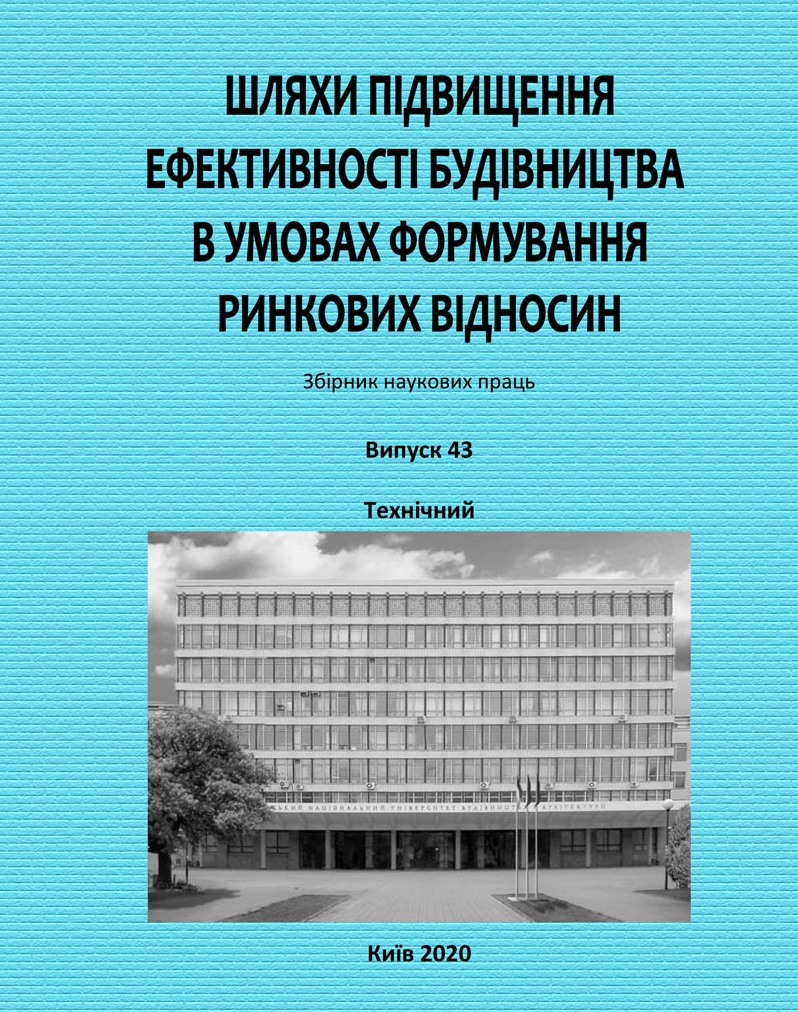Modern tendencies of organization of building production in the conditions of dense urban development
DOI:
https://doi.org/10.32347/2707-501x.2020.43.51-58Keywords:
construction, organization, logistics, streams, building production, urban development.Abstract
In the article the problems of construction in dense urban areas based on the analysis of scientific and directive sources of foreign and domestic scientists and specialists are determined. In the world, on the one hand, a large number of solutions have been proposed, certain architectural and design techniques have been worked out, that have an undoubted interest for architects, and on the other hand, many problems with architectural, planning and design aspects of dense urban development and whole modern city structure have arisen. It has affected our country. Today there is a tendency to increase the volumes of new construction and reconstruction in the conditions of dense urban development due to changes in the segmentation of demographic and geographical markers of the economic and political situation in Ukraine. There is an increasing of the intensity of construction works in the central parts of large cities and other settlements. It is a feature of modern urban engineering in the tendency of spatial planning and development. Therefore, there is an urgent need for rational methods of organization of building production and building processes. Current trends allow to improving organization processes through the application of logistics approaches. Logistics is a modern mechanism that determines the ways of updating the methods of building processes organization and able to successfully solve the most significant problems due to reliable flow control within the limits of material and production parts of the building companies activities.
The main goal of building processes organization in urban areas can be achieved with the logistics concepts such as “exactly – in time”, “needs / resources planning”, “OРT”. It gives a fundamental rethinking of the theory and practice of building production in the cases of new construction, reconstruction, ongoing or scheduled maintenances in built-up areas, landscape planning units, etc. It also allow to define the need of daily maintenance facilities in built-up area, as well as the size of land plots for new construction compliant with urban planning and engineering directives, sanitary standards and fire safety requirements.References
Avdeeva, M. and Tustanovska, L. (2016). Features of designing residential buildings in the conditions of dense development. Problems of urban environment development. 2. 3-9. URL:http://nbuv.gov.ua/UJRN/ Prms_2016_2_3.
Arutiunian, I. and Saikov, D. (2019). The place of building term reserve in concept of organizational processes optimization for building production of contracting companies. Eastern European Conference of Management and Economics. 159-161.
Banakh, A. and Poltavets, M. (2019). Analysis of mutual influence of parameters of natural and anthropogenic urban planning systems. Urban planning and territorial planning. Urban and territorial Planning. 69, 8-13.
Berkuta, A., Osynska, V., Halinskyi, O. and Vakhovych, I. (2010). Organizational and economic aspects of foreign experience of self-regulation in construction. Building Production. 52. 3-8.
Martysh, A. (2015). The methods of improving of organizational and technological reliability of development and implementation of schedules. Journal of Lviv National Agrarian University. Series: Architecture and Agricultural Building. 16. 109-115.
Arutiunian, I. (Ed.). (2017). The scientific basis for development of the construction industry in Ukraine. Zaporizhzhia, Ukraine: ZSEA.
Pavlov, I., Poltavets, M. and Pavlov F. (2018). Systematic management of production systems in construction. Scientific News of the University of Dal : electronic scientific professional publication. 14. URL:https://nvdu.000webhostapp.com/arxiv/2018_14/pdf/12.pdf . 5 p.
Pyvovarov, M. and Hyzhnyak, E. (2014). Organization of capital construction: shortcomings and ways to optimistic expenses. State and Regions. Series: Economics and Entrepreneurship. 5. 94-97.
Petrenko Yu. (2017). Features of architectural planning and urban planning decisions of the design of buildings in a dense development. Architectural Structures and Architectural Physics, 141-148.
Ognev, I., Stepanova, V. and Frolova, M. (2015). Research of dependence of the building longevity of a district on the full budget value. Proceedings of Universities. Investment. Construction. Real Estate. 4, 158-164.
Radkevych, A., Arutiunian, I., and Saikov, D. (2018). Optimization models for organizational processes of the construction production of Ukrainian contracting companies. Management of complex systems development. 33. 124-130.
Radkevych, A., and Arutiunian, I., (2014). Organization of material support system for construction. Science and progress of transport. 3 (51). 146-159.
Downloads
How to Cite
Issue
Section
License
Copyright (c) 2020 I. Аrutiunian, А. Banakh, Ye. Аrutiunian

This work is licensed under a Creative Commons Attribution 4.0 International License.
Authors who publish with this journal agree to the following terms:
- Authors retain copyright and grant the journal right of first publication with the work simultaneously licensed under a Creative Commons Attribution License that allows others to share the work with an acknowledgement of the work's authorship and initial publication in this journal.
- Authors are able to enter into separate, additional contractual arrangements for the non-exclusive distribution of the journal's published version of the work (e.g., post it to an institutional repository or publish it in a book), with an acknowledgement of its initial publication in this journal.
- Authors are permitted and encouraged to post their work online (e.g., in institutional repositories or on their website) prior to and during the submission process, as it can lead to productive exchanges, as well as earlier and greater citation of published work (See The Effect of Open Access).

